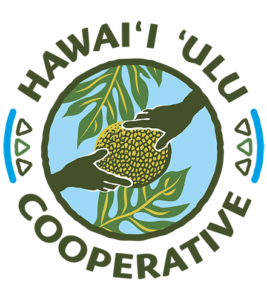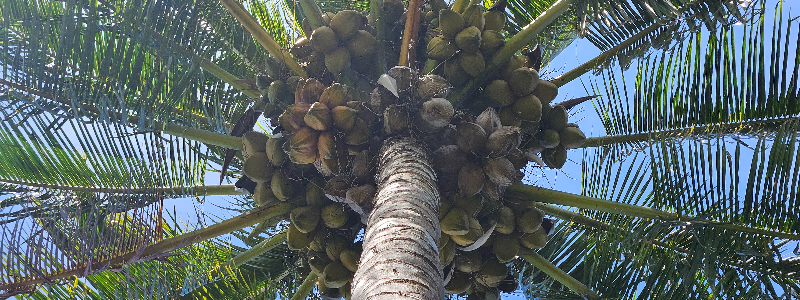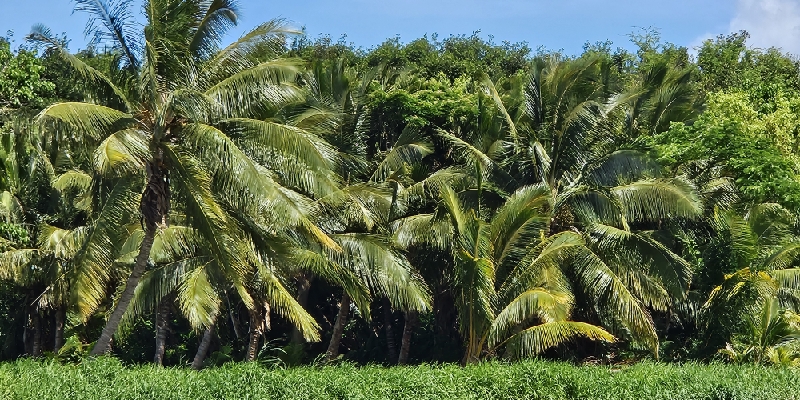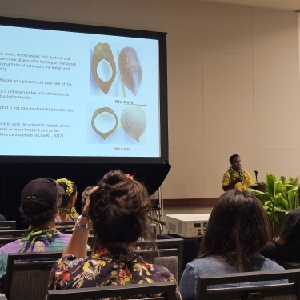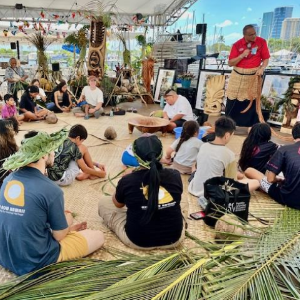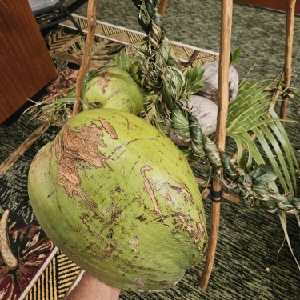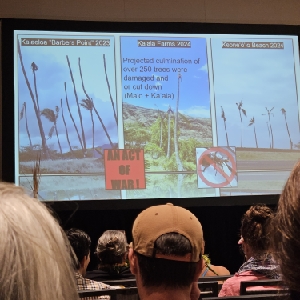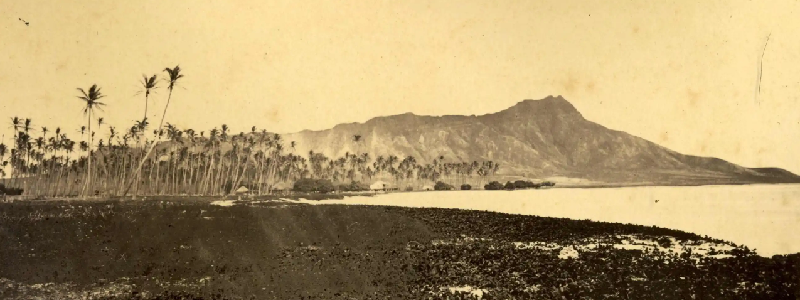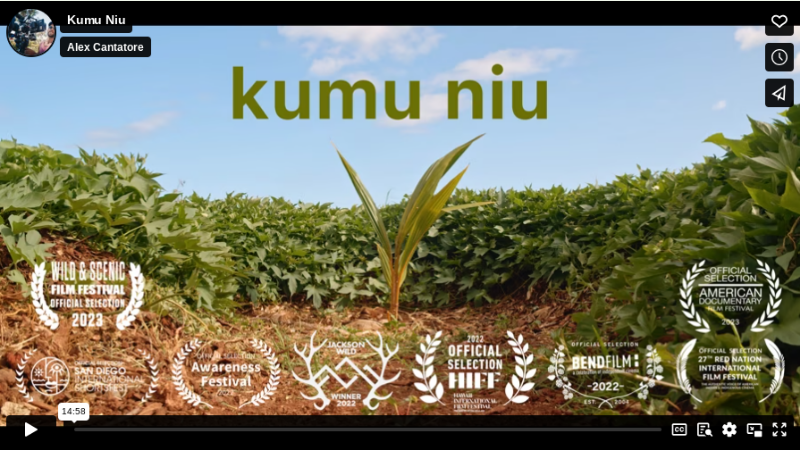ʻAha Niu & Coconut Agroforestry in Hawaiʻi
Kumu Niu, Ololani, the “Tree of Life”, Cocos Nucifera, the Coconut Tree.
If ever there was a tree in Hawaiʻi that was as important as ʻUlu, if not more, it would be the Niu. In fact, the name for a coconut grove is “Uluniu”, which might tell us something about the importance of the pair.
From the water, milk, meat, sugar, and oil – to the husk, shells, fronds, and wood. Every part of the plant can be utilized, and indeed has been by Pacific Island people from the beginning of time.
Within the massive Festival of Pacific Art & Culture (FESTPAC) in Honolulu that took place from June 6th-16th, 2024, there was a gathering of coconut practitioners from around the Pacific for ʻAha Niu, or the coconut conference. The ‘Ulu Co-op team was on-site to learn about the role coconut plays in our food systems, both traditional and modern, and how we might support the revitalization of the Hawaiian coconut industry.
This article aims to share what we learned at ʻAha Niu, and explore how ʻUlu trees and Niu trees complement each other in agroforestry systems.
ʻAha Niu – The International Coconut Conference
ʻAha Niu was the largest gathering of coconut enthusiasts and practitioners from around the pacific in many years. Over the course of the week, ‘Ike Niu (coconut knowledge) was shared by teachers from Samoa, Tonga, Kiribati, Micronesia, Hawai’i, Satawal, and the Marianas Islands – everything from lau niu (coconut leaf) weaving workshops, presentations from coconut researchers, moʻolelo (traditional stories) from cultural practitioners, as well as panel discussions on the battle against the CRB (coconut rhinocerous beetle).
Niu – Then & Now
Traditional Significance
Coconuts were an integral part of traditional Hawaiian culture, indeed it was one of the chosen crops brought on early Polynesian voyages. Voyages made possible in part thanks to coconut husk rope that helped lash wa‘a (canoes) together. A dietary staple for which there were names of every growth stage of the coconut, names and cultivation techniques for varieties grown for a specific function, and even varieties that were kapu, or restricted for royalty or ceremonial purposes only. Similar to ‘ulu, many of the coconut varieties we have today are due to the intentional selection over many generations of Pacific Island ancestors.
During ʻAha Niu attendees learned from co-op member and ʻUlu Ambassador, Aunty Kū Kahakalau the moʻolelo of Niuolahiki, the Hawaiian diety who could take the form of a niu tree. She also told of Uluniu O Helemoa, the famed ancient grove of Waikīkī which once held over 10,000 niu trees. Then there was the grove of Kaunalewa on West Kauaʻi, referenced in multiple ‘Ōlelo no‘eau (traditional proverbs) and thought to have been Hawaiʻi’s largest coconut grove. Needless to say, the processing and use of niu was much more commonplace in the past than it is today in Hawaiʻi.
But when it came to establishing a coconut production system, there were a few main practices that can be identified from traditional methods:
- Uluniu – this is your general coconut grove. They could be big or small, have a collection of varieties, or be exclusively for a specific variety like a Polymotu.
- Polymotu – this is a practice found across the pacific which aims to produce one specific desired variety. It uses geographic isolation like protected beach or valley, or sometimes an entire small island, to naturally increase the likelihood of selective pollination in order to produce true-to-type coconuts. On a small scale, a Polymotu is sometimes simply three niu trees of the same variety planted in a triangle near each other (20-30ft between each tree). The trios are spaced a little farther from each other and this is known to produce a similar selective pollination effect.
- Multi-story Cropping – The traditional Polynesian agroforestry system that utilized coconuts as one of their main emergent or overstory trees. Commonly referred to as a “Food forest” or “Forest farming”, this type of system is space efficient and allowed different crops to be produced at multiple heights.
Uluniu O Helemoa, ancient grove of Waikīkī. Circa 1870
The state of coconuts in Hawai‘i today
It is no secret that coconuts in Hawaiʻi today are in a dire situation when compared to traditional times, or when compared to the other coconut producing nations of the world today. Aside from our amazing local roadside coconut guy, or occasional farmers market, there is virtually nowhere in Hawaiʻi where you can go into a store and find locally produced coconut products. All the coconut water, sugar, milk, and oil, are imported from places like the Philippines, Thailand, Vietnam, and other pacific islands. In fact, the HDOA (Hawaiʻi Department of Agriculture) does not even track coconut production statistics for the state.
From the wholesale clearing of groves to make way for sugar or development, to widespread trimming culture that has developed alongside the tourism industry, to now the devastating impact that CRB (Coconut Rhinoceros Beetle) is causing, it’s clear we have much work to do in order for all Hawaiʻi to access local coconut regularly again.
Fortunately there is hope as a movement of coconut champions are rising to the call to address the many issues facing our coconut industry in Hawaiʻi. You can watch the award winning short-film “Kumu Niu” for an in-depth look at their effort and join the NIU NOW movement.
